Discover 11 hidden attractions, cool sights, and unusual things to do in Schenectady (United States). Don't miss out on these must-see attractions: Proctor's Theatre, Nott Memorial, and First Reformed Church of Schenectady. Also, be sure to include First Presbyterian Church in your itinerary.
Below, you can find the list of the most amazing places you should visit in Schenectady (New York).
Table of Contents
Proctor's Theatre
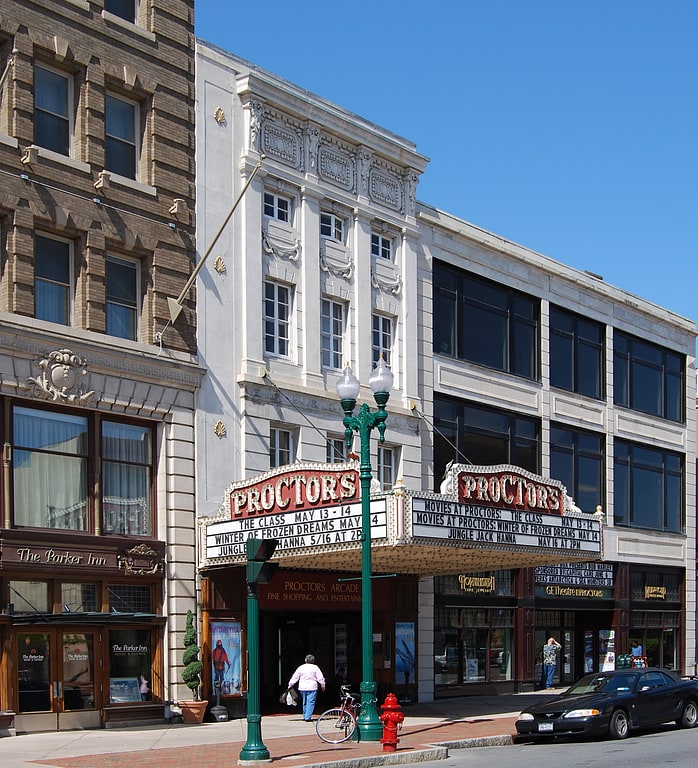
Theatre in Schenectady, New York. Proctor's Theatre is a theatre and former vaudeville house located in Schenectady, New York, United States. Many famous artists have performed there, notably Mariah Carey, Britney Spears, Hal Holbrook, Ted Wiles, and George Burns, as well as many others. It has one of the largest movie screens in the Northeast.
The theatre was opened on December 27, 1926. It was designed by architect Thomas Lamb. Four years later it hosted the first public demonstration of television. In 1979 the building was added to the National Register of Historic Places, shortly before being renovated after a long period of decline and neglect. A renovation completed in 2007 added two theatres to the complex, providing a variety of performance spaces.[1]
Address: Schenectady, 432 State Street
Nott Memorial
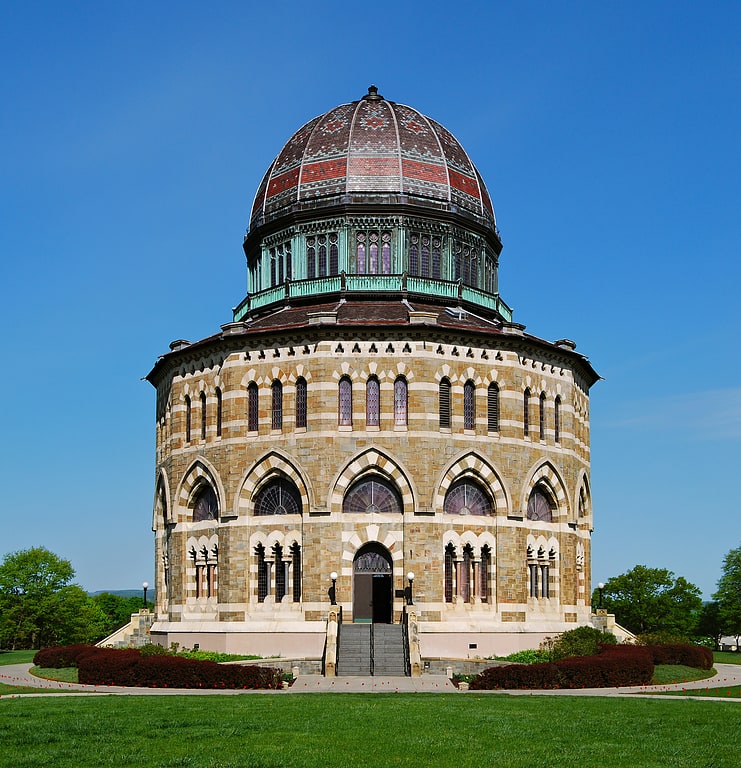
Building in Schenectady, New York. The Nott Memorial is an elaborate 16-sided stone-masonry building which serves as both architectural and physical centerpiece of Union College in Schenectady, New York. Dedicated to Eliphalet Nott, president of Union for a remarkable sixty-two years, the 110-foot high by 89-foot wide structure is a National Historic Landmark, noted for its distinctive and colorful Victorian architecture.[2]
Address: Union Collage, Schenectady
First Reformed Church of Schenectady
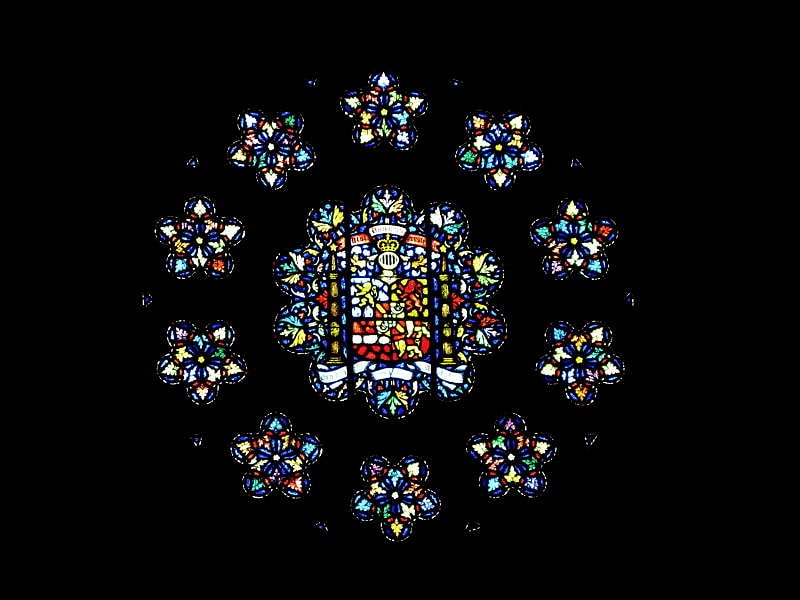
Reformed church in Schenectady, New York. First Reformed Church of Schenectady is located at 8 North Church Street in the Historic Stockade District of Schenectady, New York and is a member of the Reformed Church in America. The church was first organized in 1680 by Dutch settlers and was the first church established in the Mohawk Valley. The church, along with the Stockade District were added to the National Register of Historic Places in 1973 and again with a boundary increase in 1984.[3]
Address: 8 N Church St, 12305-1699 Schenectady
First Presbyterian Church
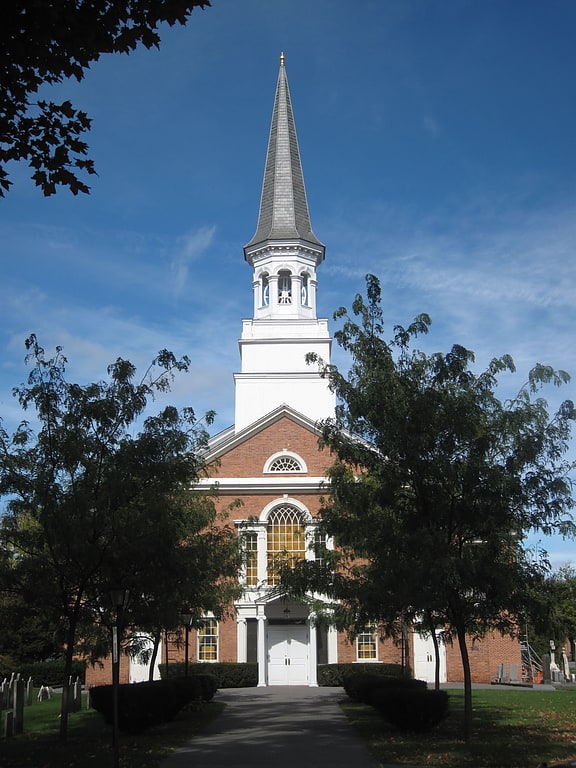
Church. First Presbyterian Church in Schenectady, New York is a historic Presbyterian Church in America congregation.
The roots of the congregation go back to the 1730s. Episcopalians and Presbyterians had used the St. George's Episcopal Church building, with each group using different entrances to the building. In 1769, First Presbyterian was founded when its members decided to build their own wooden church structure. The first settled pastor was the Rev. Alexander Miller in 1771. The present church building was copied from the Ransom Court Presbyterian Church in Philadelphia, Pennsylvania under Rev. Alexander Monteith's pastorate (1809-1815). First Presbyterian Church was distinguished by a wrap-around balcony of the oval interior. The original church had white walls and blue woodwork. Additions were made in 1834, and transepts were added in 1859. The congregation helped start several other churches in the neighborhood, including State Street Presbyterian Church in 1869. In 1900, Union Presbyterian church was established in Schenectady with 81 members. The renowned Rev. Jonathan Trumbull Backus, for many years a trustee of Union College, pastored First Presbyterian from 1832 to 1872. Under his leadership the congregation grew significantly and established East Avenue (now State Street) Presbyterian Church. Rev. Backus was elected moderator of the Presbyterian Church in the United States of America in 1870.
As the 1900s dawned, First Presbyterian was involved in much outreach and growth. However, the winds of change were blowing, and new mentalities began to seep into the church. Spiritual zeal cooled during the pastorates of Reverends Anthony and Mutch. The Sunday evening service was discontinued and a certain spiritual apathy settled over the church. The liberal 'social gospel' rampant in the early 20th century had infected First Presbyterian's pulpit and had led to a serious departure from the essentials of the Gospel.
All this began to change in 1937. In that year, the Rev. Herbert S. Mekeel (minister from 1937-1979) was called to the church, and like Dr. Backus a century earlier, started it on the road to spiritual vitality once again. This did not occur without the pain of change and transition. Rev. Herbert S. Mekeel pastored the church to 1937 to 1979, and brought with him strong evangelical teaching. Many members became dissatisfied and, in the first years of his pastorate, went over to the liberal First Reformed Church (RCA). But Rev. Mekeel held his ground, and the remaining congregation grew even larger and stronger than before.
In the 1960s, however, theological change once again began to sweep through the United Presbyterian Church in the United States of America, the denomination of which First Presbyterian had been a member. The UPC adopted the Confession of 1967, which was effectively intended by its supporters to replace the Westminster Standards in the denomination and their high view of the authority of Holy Scripture. First Presbyterian opposed replacing the historic Westminster Confession with other confessions. In 1975, the congregation decided to petition the Presbytery of Albany to let First Presbyterian to change the denominational affiliation. In 1977, the congregation voted to dissolve all relations with Albany Presbytery. This led to much legal wrangling over the church property. A state law provision concerning churches incorporated before 1828 (First Presbyterian Church was incorporated in 1809) allowed such churches the right to change affiliation without impact on their property. Albany Presbytery forcefully sought to bring the congregation to heel, including through an unsuccessful effort to lock officers and members of First Presbyterian out of the church's buildings. A lawsuit made its way through the U.S. courts, going so far as to reach the U.S. Supreme Court. The case was finally settled in December 1984, in favor of the members and officers of First Presbyterian.
In September 1989, First Presbyterian affiliated with the Presbyterian Church in America. In 2010, the church celebrated its 250th anniversary. The current senior pastor is Dr. Lawrence Roff.
In 2011, First Presbyterian Church had about 400 members.
The church building is located at 209 Union Street, Schenectady, NY 12305.[4]
Schenectady City Hall
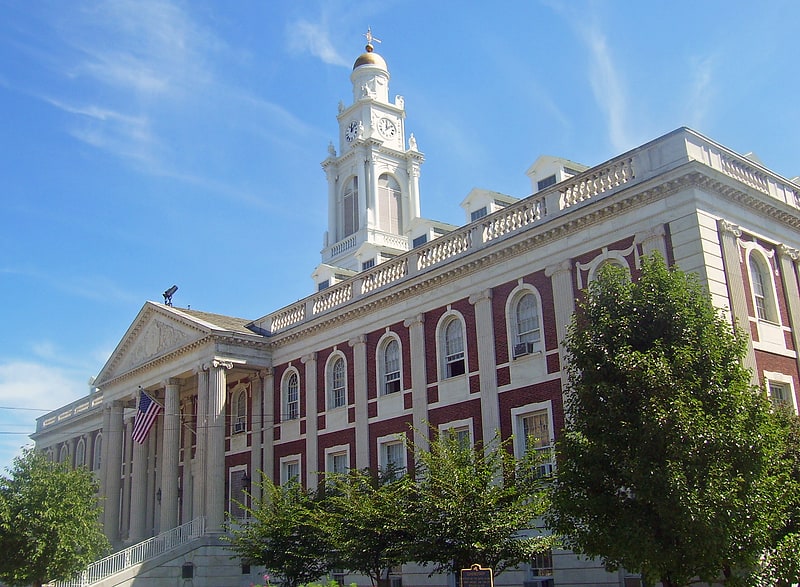
City government office in Schenectady, New York. Schenectady City Hall is the seat of government of the city of Schenectady, New York, United States. Designed by McKim, Mead, and White, the building was constructed between 1931 and 1933. It is located on the block between Clinton, Franklin, Jay and Liberty streets. It is built in a revival of the Federal Style, the dominant style of American architecture from 1780 to 1830. Its most prominent features include the square clock tower, with its gold-leaf dome and weathervane, and the Ionic neoclassical portico. It houses not only city government but the local office of U.S. Rep. Paul Tonko.
The classically-inspired architecture echoes the arched windows on the nearby post office, built two decades earlier. Both were listed on the National Register of Historic Places in 1978; the post office was later listed separately as part of a statewide submission of post offices.[5]
Address: 105 Jay Street, Schenectady
Dudley Observatory
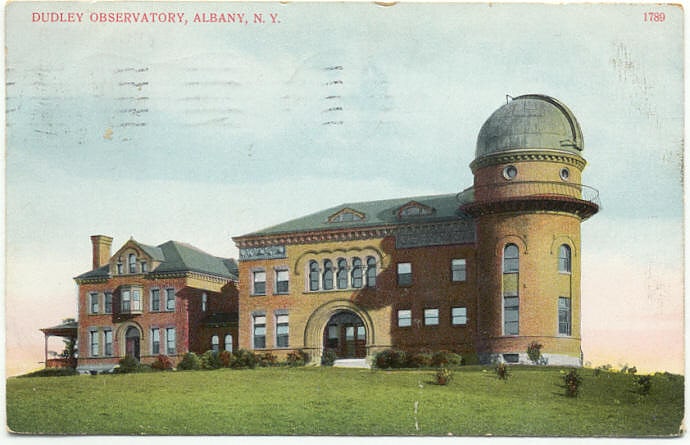
Astronomical observatory. Dudley Observatory is an astronomical observatory originally located in Albany, New York, and now in Loudonville, New York. It is no longer operating as a scientific observatory, but remains the oldest non-academic institution of astronomical research in America. The Observatory was chartered on February 11, 1852 by the New York State Senate, and by the New York State Assembly on April 3, 1852. It was named for Charles E. Dudley of Albany, a former United States Senator and member of the Albany Regency. Dudley lived in New York State, died in 1841, and his widow Blandina Bleeker Dudley endowed the Dudley Observatory after his death.
Dudley is part of the coalition of institutions comprising Union University. Other institutions include Albany College of Pharmacy, Albany Law School, Albany Medical College, and the Graduate College of Union University.
Dudley Observatory has operated at two different observing sites since its founding. The first began construction in 1852, on a rise to the north-east of downtown Albany that was locally known as "Goat Hill". The building was dedicated on August 28, 1856 prior to its completion, with Edward Everett delivering the keynote oration. By the 1890s, railroad traffic around the original building had grown to the point where the vibrations were disrupting the astronomical instruments. The original building was sold to the city of Albany, and new property was purchased on the grounds of the Albany Alms-House.
After World War II, Dudley began a transition from astronomical observation to research for the space race. Consequently, the second observatory was sold to Albany Medical Center in 1963 and an office building was purchased at 100 Fuller Road, near the University at Albany. This phase lasted until the end of the space race, when funding from NASA dried up. The Fuller Road office was rented to the University in 1976. The Observatory made additional moves, first to Schaffer Heights building in Schenectady, then to the MiSci museum of science in Schenectady. and finally to their current location in Roger Bacon Hall at Siena College.
The Observatory has evolved from a research to an educational foundation. In 2019, the archival collection was donated to the New York State archives, which had the resources to catalog and preserve the Observatory's documents. A collection of scientific hardware, including a Brashear refracting telescope and equatorial mount, were donated to the New York State Museum in Albany. The Dudley Observatory maintains a collection of rare books including first editions by Galileo and Copernicus. As part of its efforts to enhance its outreach capabilities, in late 2019 the Dudley Observatory moved to Siena College in nearby Loudonville, N.Y.[6]
Address: 15 Nott Terrace Hts, Schenectady
Vale Cemetery and Vale Park
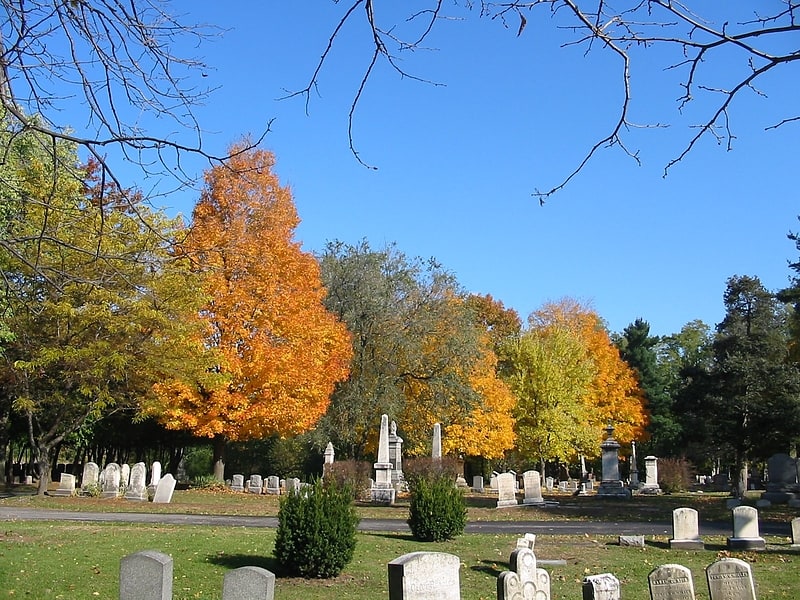
Cemetery. Vale Cemetery is a historic rural cemetery and the largest cemetery in Schenectady, New York. It opened on 21 October 1857 when the Rev. Julius Seely dedicated what was then termed "the Vale". It has tripled its size since opening and today it holds the remains of some of the most notable persons in Upstate New York. In 1973, a 35-acre tract of unused and abandoned cemetery land around the ponds of Cowhorn Creek was sold to the city of Schenectady to form Vale Park.
The cemetery and park were listed on the National Register of Historic Places in 2004.[7]
Empire State Aerosciences Museum

Museum in the East Glenville, New York. The Empire State Aerosciences Museum is a non-profit museum which strives to "educate, entertain and excite with experiences in air and space". Established in 1984 and chartered by the New York State Department of Education, the museum is located on 27 acres of land on the western perimeter of the Schenectady County Airport in Glenville, New York, United States.
ESAM sponsors an annual air show at the Schenectady Airport.[8]
Address: 250 Rudy Chase Dr, 12302-7135 Scotia
General Electric Research Laboratory
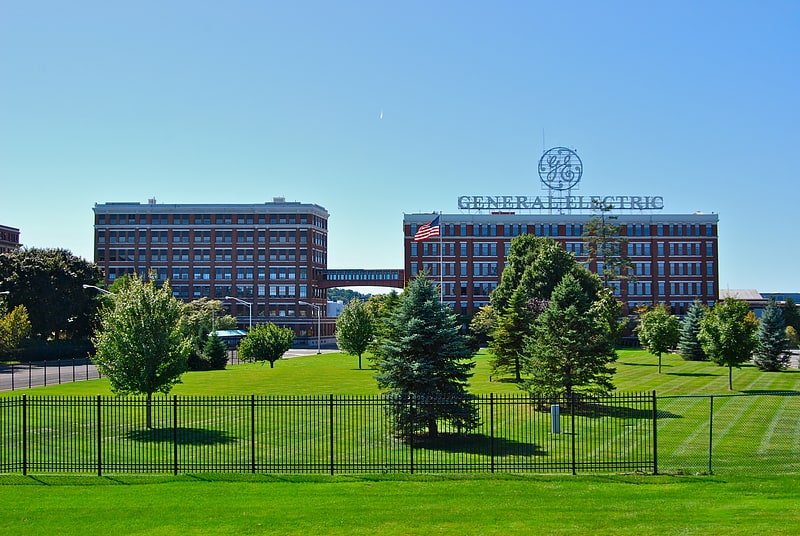
Research institute in Schenectady, New York. General Electric Research Laboratory was the first industrial research facility in the United States. Established in 1900, the lab was home to the early technological breakthroughs of General Electric and created a research and development environment that set the standard for industrial innovation for years to come. It developed into GE Global Research that now covers an array of technological research, ranging from healthcare to transportation systems, at multiple locations throughout the world. Its campus in Schenectady, New York was designated a National Historic Landmark in 1975.[9]
Elston Hall
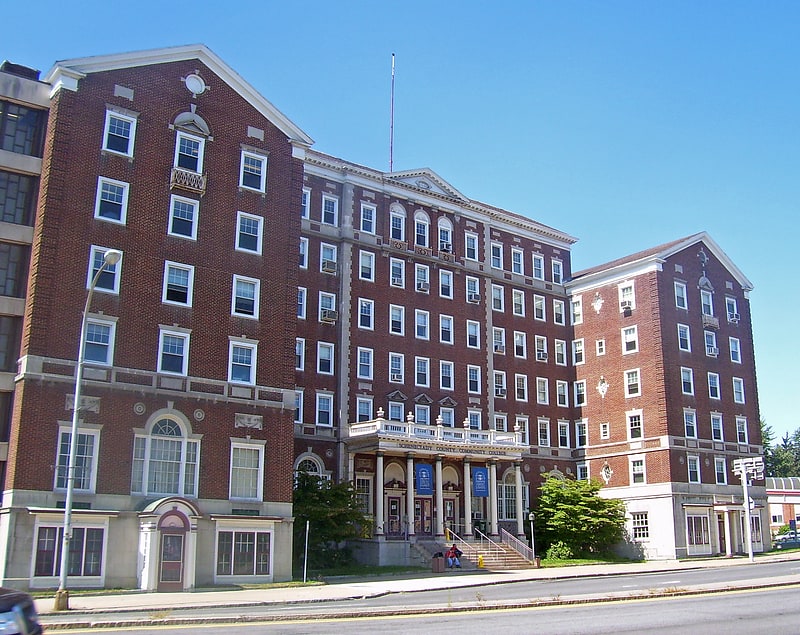
Elston Hall, formerly the Hotel Van Curler, is located on Washington Street in the city of Schenectady, New York, United States. It is a tall brick building constructed in 1925 in the Classical Revival architectural style.
Its construction was partially financed by local employers General Electric and the American Locomotive Company, which needed space for new workers to live and wanted an architecturally distinctive building comparable with large city hotels of the era. Today, it is one of the main buildings of Schenectady County Community College.[10]
Foster Building
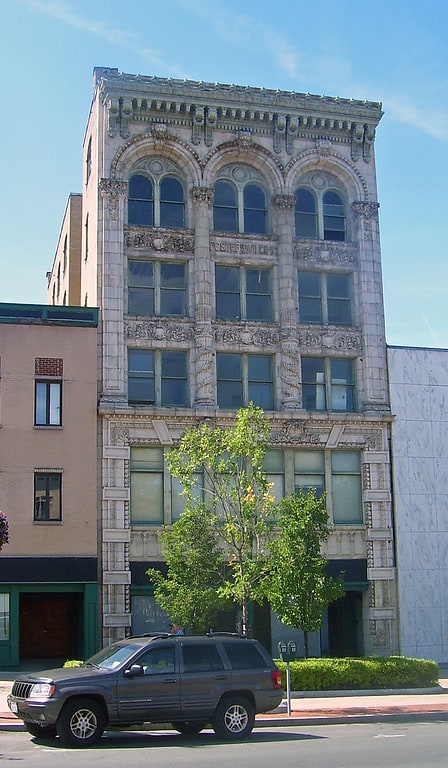
Building in Schenectady. The Foster Building, originally the Hotel Foster, is located on State Street in Schenectady, New York, United States. It is a commercial building in the Beaux-Arts architectural style.
When built in 1907, it was the first building in the city to use terra cotta as its primary siding on the front facade, and the first built under the precepts of the City Beautiful movement. In 1991 it was listed on the National Register of Historic Places. It has since been remodeled into apartments, but has been vacant for a while and is suffering from the neglect. Past water damage will require that the lavishly appointed interior be completely gutted. The regional redevelopment agency is considering acquiring the building through eminent domain in order to ensure its restoration.[11]